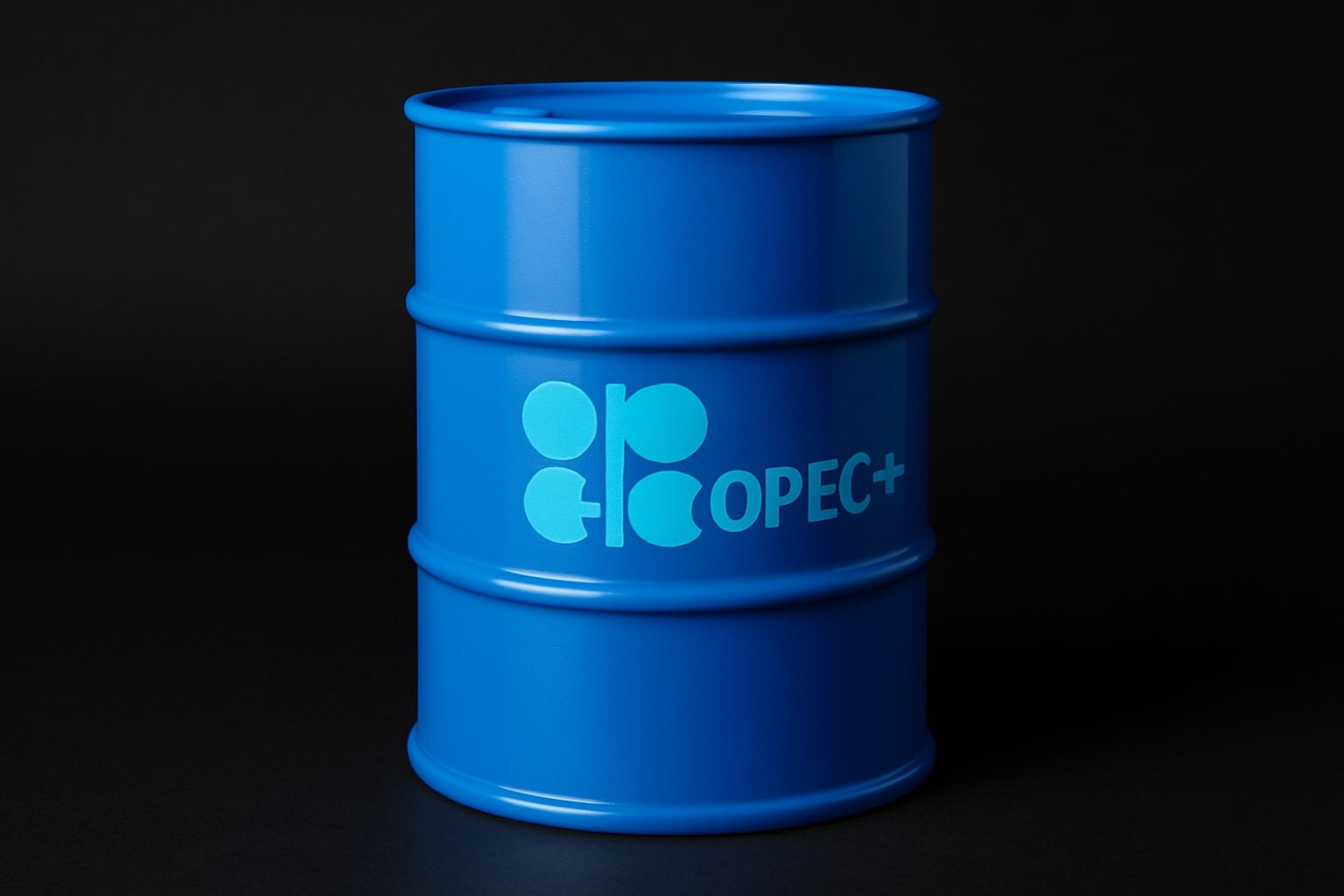
Oil Price Forecast: WTI and Brent Slide as OPEC+ Supply Strategy Fuels Surplus Fears
With WTI at $61.69 and Brent at $65.33, OPEC+ output talks, U.S. inventory builds, and India’s crude pivot add downside risk to CL=F and BZ=F prices | That's TradingNEWS
WTI (CL=F) and Brent (BZ=F) Under Pressure After Saudi Signals Supply Hike
Crude benchmarks are retreating sharply, with West Texas Intermediate sliding 2.82% to $61.69 per barrel and Brent down 2.48% to $65.33. The drop was ignited by reports that Saudi Arabia is pressing OPEC+ ministers to accelerate the reinstatement of 1.66 million barrels per day of supply that had been cut under voluntary quotas. This proposal, now expected to dominate the upcoming OPEC+ virtual meeting, represents a strategic pivot from defending prices toward reclaiming market share, underscoring Riyadh’s willingness to test downside resilience in the oil market.
Inventory Builds in the U.S. Complicate OPEC+ Narrative
Fresh EIA data showed a 2.4 million barrel build in U.S. commercial crude stockpiles last week, defying expectations of a draw and amplifying pressure on prices. Refineries moving into seasonal maintenance reduced throughput, aggravating the supply overhang. Gasoline prices also reflected weakness, down nearly 2.85% to $1.95 per gallon. Together, these figures undermine the short-term bullish case and support the market’s view that a glut may form even if OPEC+ decides not to accelerate its supply hike.
Asia Buys the Dip While India Shifts Crude Mix
Lower prices are stimulating bargain hunting in Asia. Imports across the continent are rising, with India playing a pivotal role. The country’s top refiner, IOC, bypassed U.S. crude at its latest tender, instead securing West African and Middle Eastern barrels. This pivot reflects the narrow arbitrage between WTI and seaborne alternatives but also signals how pricing in Asia can quickly reshape flows. India continues to buy Russian oil aggressively, taking advantage of deepening discounts as Russia struggles with refining outages caused by Ukrainian drone strikes.
Read More
-
DGRO ETF Price: Is DGRO at $69.17 Still the Better Dividend-Growth Bet?
17.12.2025 · TradingNEWS ArchiveStocks
-
XRP Price Stuck Below $2 As XRPI at $10.74 and XRPR at $15.26 Ride $1B+ ETF Inflows
17.12.2025 · TradingNEWS ArchiveCrypto
-
Natural Gas Price Forecast - NG=F Steady Near $4 as TTF Jumps on Colder Forecasts and LNG Outage Risk
17.12.2025 · TradingNEWS ArchiveCommodities
-
USD/JPY Price Forecast: USDJPY=X 155.50 Pivot Before BoJ Hike and US CPI
17.12.2025 · TradingNEWS ArchiveForex
Geopolitical and Structural Risks Add Volatility to CL=F and BZ=F
Oil’s weakness is not purely supply-driven. Ongoing geopolitical risk, from Venezuelan military confrontations in the Caribbean to Houthi missile activity near Saudi lanes, is simmering in the background. Yet the overriding narrative is excess supply, not disrupted flows. Analysts warn that if Brent breaks below $65 and WTI under $60, psychological thresholds could fuel momentum selling. ING projects OPEC+ will keep production unchanged, but Saxo Bank highlights a “floor” around current prices, arguing that disruptions in Iraq and Kazakhstan—both exceeding quotas—could cap downside. Still, Saudi Arabia’s push suggests the kingdom sees current demand elasticity as too fragile to support a rally, particularly with Chinese demand showing signs of slowing.
Medium-Term Outlook and Investment Implications
With OPEC+ having already unwound 2.2 million barrels per day of cuts this year, the market is now staring at the potential of another rapid flood of supply. The result is a widening consensus that oil could revisit levels not seen since 2021. Traders are now debating whether CL=F will retest $60, a level that could trigger U.S. shale producers to reconsider drilling programs, or whether Brent (BZ=F) stabilizes near $65 with support from Asian imports. For investors, the equation is clear: while supply-driven weakness creates a bearish short-term setup, any reversal in OPEC+ policy or geopolitical flare-up could flip sentiment instantly.



















